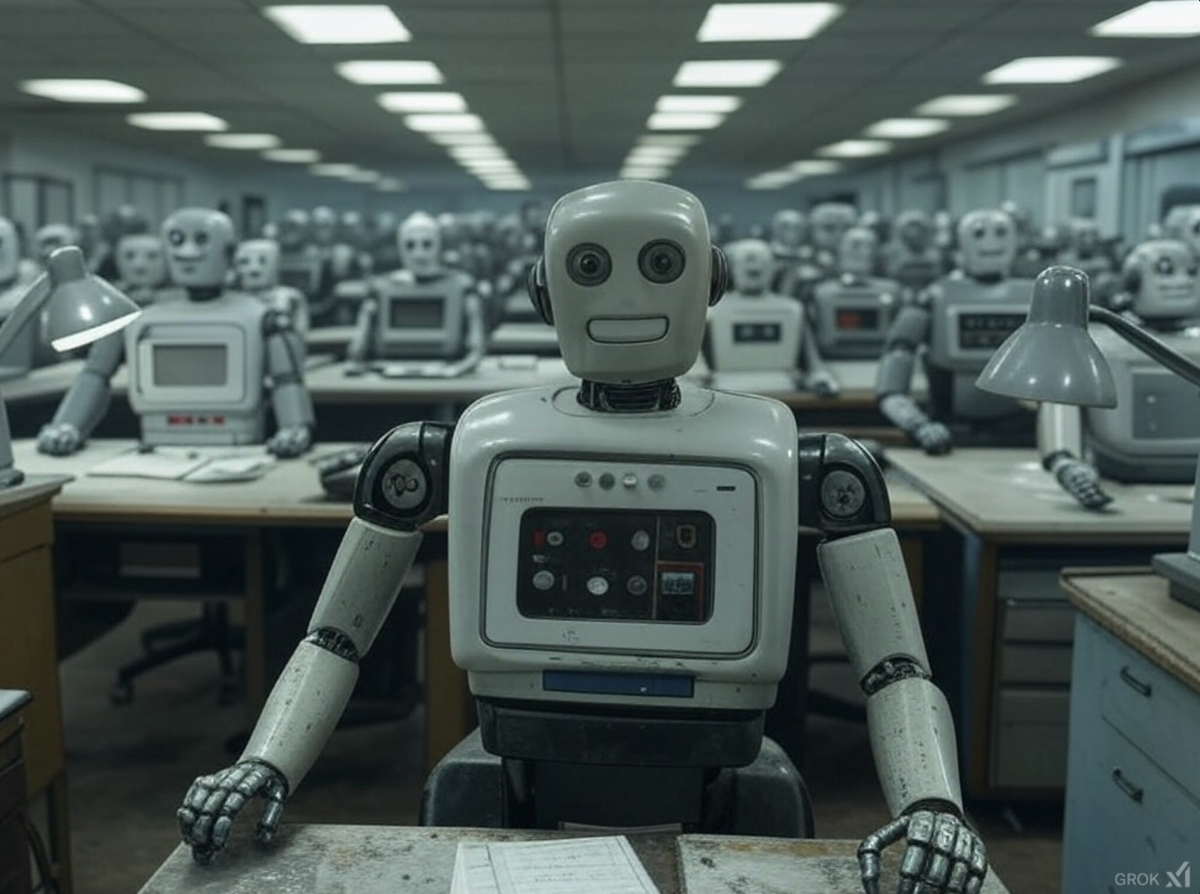The human challenges of robotic process automation
"While hyperautomation and GenAI bring transformative potential, they also pose significant challenges."

Robots aren't physically moving into the workplace - yet. But they are already there in software form thanks to Robotic Process Automation (RPA), which uses bots to automatically perform repetitive, rule-based tasks.
Sean Bailey, Head of RPA at the tech consultacy Ten10, has studied businesses that are simultaneously embracing hyperautomation and generative AI (GenAI), as well as low-code platforms that cut the cost and difficulty of innovation. In an op-ed for Machine, he explains how organisations and leaders can get the best out of RPA and how it will change the workplace.
"RPA’s evolution demonstrates how automation effectively aligns with key business priorities."
Demand for Robotic Process Automation is surging, Bailey writes. Driven by the pursuit of higher productivity, cost savings, and improved customer experiences, businesses are increasingly embracing hyperautomation, generative AI (GenAI), and low-code platforms to scale and innovate their operations. In fact, Gartner predicts that by 2025, 70% of enterprises will engage in digital business model transformation services to implement analytics-driven decisions and management strategies.
Although these tools promise enhanced efficiency, deeper insights, and improved collaboration between humans and machines, organisations must prioritise reskilling their workforce and adopting a human-centric approach to innovation to fully leverage their potential.
The rise of hyperautomation and GenAI
Hyperautomation, which combines advanced technologies like robotic process automation (RPA), artificial intelligence (AI), and machine learning (ML), has become a cornerstone for digital transformation.
Traditionally, automation tools like supply chain management or manufacturing execution systems (MES) focused on specific operational processes. However, hyperautomation takes this further by automating high-volume, repetitive tasks, addressing background inefficiencies and enabling end-to-end process management.
RPA’s evolution demonstrates how automation effectively aligns with key business priorities:
1) Cost reduction: Scaling businesses face growing operational costs. RPA and AI streamline workflows across functions such as procurement, supply chain
management, and production operations. Automating tasks like supplier onboarding, invoice matching, and purchase order management significantly reduces overhead, allowing organisations to maintain competitiveness.
2) Improved communication: Hyperautomation bridges gaps between siloed
functions like manufacturing, marketing, and sales. By integrating data from diverse systems, RPA generates actionable reports that empower teams to focus on
strategic activities and identify cross-selling opportunities.
3) Compliance and sustainability: In heavily regulated industries, RPA ensures timely and accurate compliance reporting. By drawing and aggregating data from legacy systems, businesses can meet stringent regulatory demands and promote sustainability objectives, such as reducing waste through more efficient processes.
GenAI further enhances these capabilities, transforming RPA into a gateway for AI-powered innovations. For instance, AI-driven tools can analyse customer interactions, optimise quality control, and trigger automated responses to defects. By combining hyperautomation with GenAI, businesses achieve operational efficiencies and unlock new possibilities for process optimisation.
Reskilling for an automated future
While hyperautomation and GenAI bring transformative potential, they also pose significant challenges for the workforce. To thrive alongside these technologies, organisations must invest in reskilling programs that equip employees with the necessary skills to collaborate effectively with automation tools.
Key areas for workforce development include digital literacy, where employees gain foundational knowledge of automation technologies like RPA and AI to understand their applications and limitations. Equally important is data analysis and decision-making; while AI excels at pattern recognition and providing data-driven insights, human judgment remains vital for interpreting these results and making strategic decisions.
Additionally, adaptability and continuous learning are essential, as both technology and workplace demands continue to change. By creating a culture of lifelong learning, organisations can ensure employees are equipped to adapt to emerging tools and methodologies effectively.
Successful reskilling initiatives also require strong leadership and a commitment to integrating automation in a way that complements human capabilities. By focusing on practical problem-solving and creating a growth mindset, organisations can prepare their workforce for a future where humans and machines work hand-in-hand.
Empowering employees and building trust in automation
A crucial aspect of successful automation is simplifying integration. Low-code and no-code platforms are making automation more accessible by enabling non-technical users to create workflows and enhance processes without relying on IT departments. This empowerment encourages employees to take an active role in shaping automation solutions within their organisations.
Equally important is building trust in the technology. For automation to be effective, acceptance and trust from the workforce are essential. Transparent communication about the purpose and benefits of automation helps cultivate this trust. By establishing clear frameworks and setting realistic expectations, businesses can reduce resistance and foster smoother, more successful implementation of automation technologies.
Future trends in hyperautomation and GenAI
The convergence of hyperautomation and generative AI is shaping the future of automation, driving transformative changes in how businesses operate and innovate. Emerging trends highlight enhanced interoperability as platforms increasingly focus on seamless integration with diverse systems, including legacy software, to ensure comprehensive process automation. Scalability is another key trend, with hyperautomation solutions designed to quickly respond to changes in demand, such as seasonal fluctuations or global events.
For example, RPA and AI overlays play a crucial role in optimising inventory management and triggering automatic replenishment. Advancements in low-code and AI capabilities are also making automation solutions more cost-effective, offering quicker returns on investment while supporting long-term digital transformation.
Despite these advancements, challenges remain. Overambitious automation projects often lead to failures, underscoring the need for a phased approach. Starting with simpler tasks and gradually scaling up ensures that organisations can build a strong foundation for automation.
Ultimately, the future of automation lies in creating a harmonious relationship between technology and human ingenuity. By automating repetitive tasks, enhancing decision-making, and enabling scalability, these technologies provide organisations with powerful tools for achieving efficiency and growth. Embracing this synergy allows businesses to drive sustainable innovation and remain competitive in an increasingly automated world.
Have you got a story or insights to share? Get in touch and let us know.




